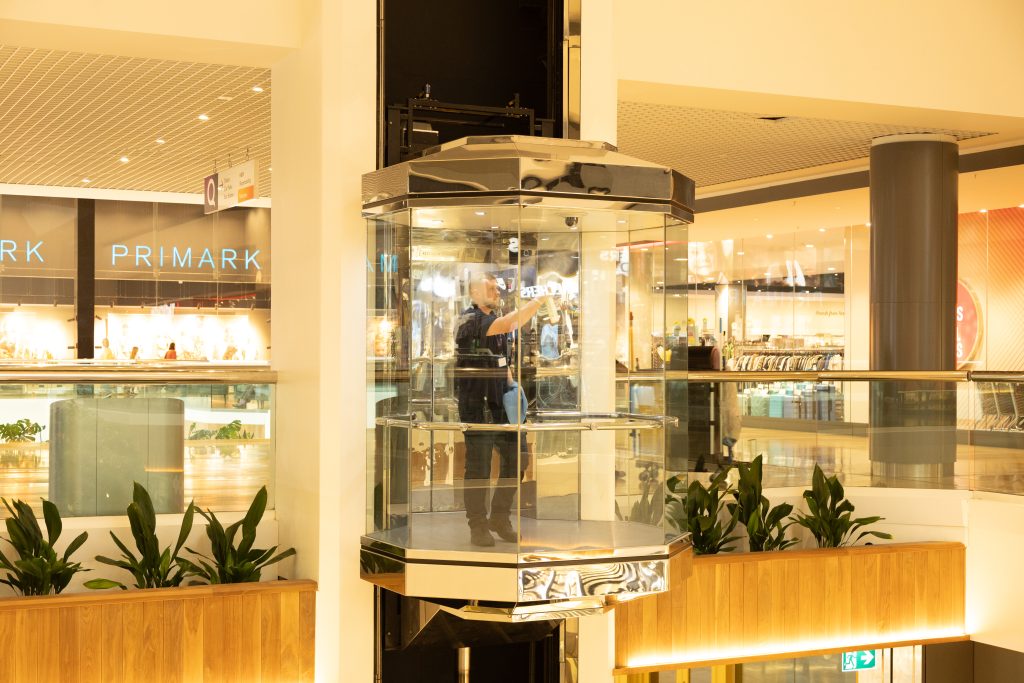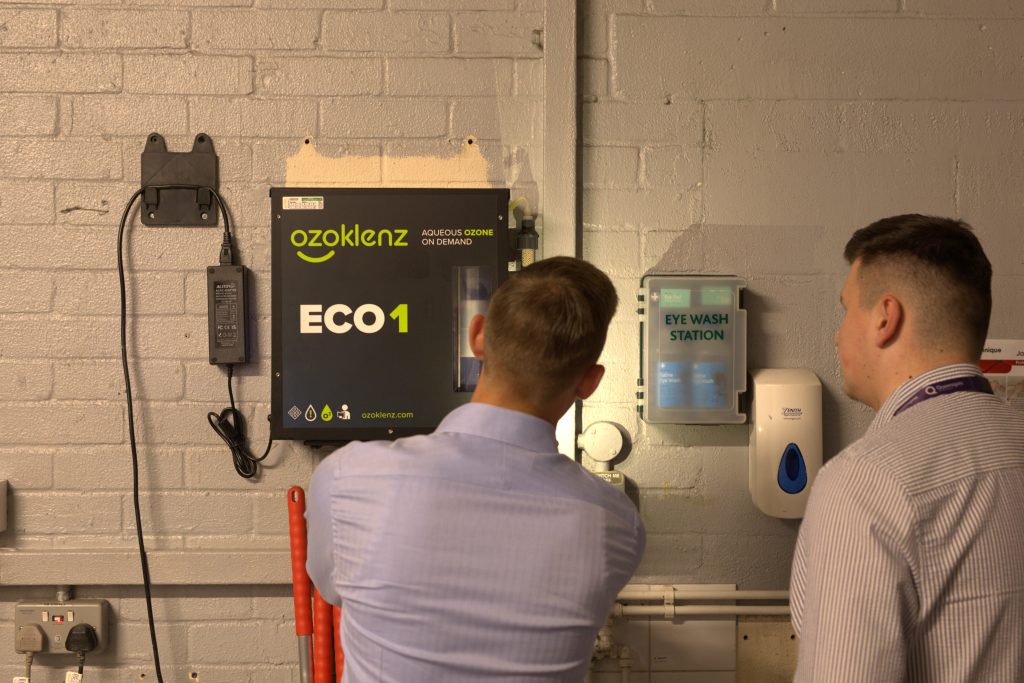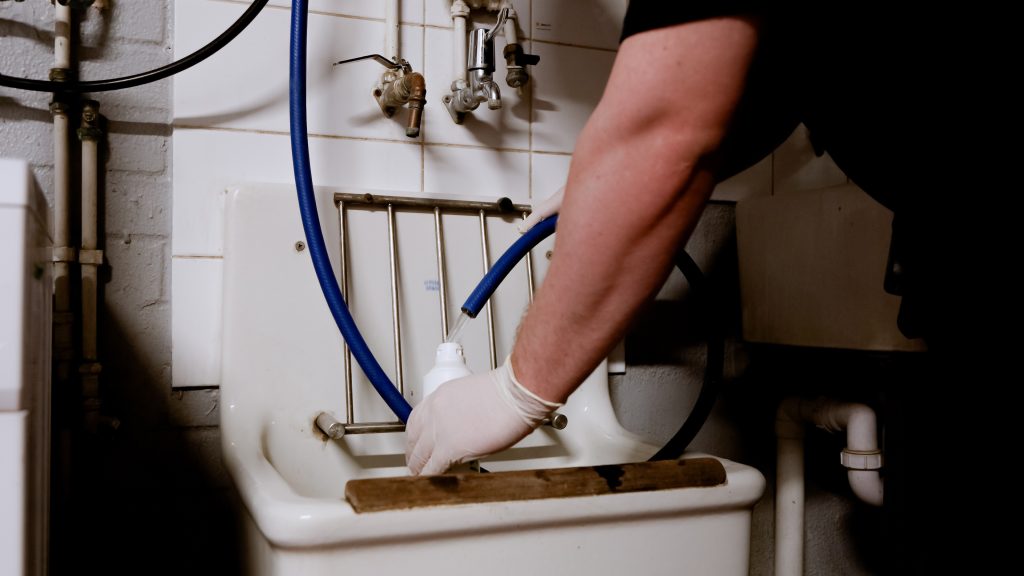Facilities managers in shopping centres have a tough job. Every day, they juggle budgets, cleaning schedules, and tenant expectations while keeping high-traffic spaces spotless. With growing pressure to cut costs and operate more sustainably, many are now exploring chemical-free cleaning as a smarter alternative. It’s not just about making floors shine or restrooms smell fresh. It’s about creating a safe and welcoming environment for visitors and staff.
Traditional cleaning methods rely heavily on chemicals. While they might seem like the easiest solution, they come with hidden costs. Chemical-based cleaning can be expensive, inefficient, and harmful to people and the environment.
So how do you strike the right balance? How do you ensure cost-effective cleaning without compromising on hygiene or sustainability? The answer lies in chemical-free cleaning. Done right, it can reduce expenses, improve efficiency, and support environmental responsibility.

The True Cost of Cleaning
Many cleaning budgets focus on upfront expenses like labour, supplies, and equipment. But that’s only part of the equation. Chemical-based cleaning has hidden costs that build up over time.
Health Risks for Facilities Managers, Staff and Visitors
Strong cleaning chemicals can cause skin irritation, breathing issues, and allergic reactions. Facilities teams that handle these products daily are at even greater risk. Frequent exposure to harsh substances can lead to chronic health problems, increased sick days, and higher staff turnover.
Shoppers and tenants are also affected. Residue from chemical cleaners lingers on surfaces, and strong fumes can cause discomfort. People with asthma or allergies may avoid certain areas, affecting foot traffic and tenant satisfaction.
Damage to Surfaces and Equipment
Chemical cleaners can be tough on more than just dirt. Over time, they break down flooring, countertops, and fixtures. Bleach-based products can cause discoloration, while acidic cleaners wear down protective coatings. What starts as a simple cleaning solution can turn into expensive repair or replacement costs.
Environmental and Compliance Costs
Many cleaning chemicals end up in wastewater systems, contributing to pollution. Airborne chemicals from sprays and disinfectants can also lower indoor air quality. As environmental regulations become stricter, businesses that rely on traditional cleaning methods may face fines or restrictions.
By switching to chemical-free solutions, facilities managers can reduce these risks and save money in the long run.

Efficiency Without Compromise for Facilities Managers
One common concern about chemical-free cleaning is effectiveness. If chemicals are removed from the equation, can the same level of cleanliness be maintained? The answer is yes.
Modern chemical-free cleaning solutions are designed to work just as well, if not better, than traditional methods. Technologies like steam cleaning, electrolysed water, and microfibre cloths remove dirt and bacteria without relying on chemicals.
Faster Turnaround Times for Facilities Managers
With chemical cleaning, teams often need to wait for surfaces to dry or for fumes to dissipate before an area is safe to use. Chemical-free methods, such as steam cleaning, eliminate this waiting time, allowing cleaning teams to move efficiently from one task to the next.
Lower Maintenance Needs
Harsh chemicals can wear down cleaning equipment, leading to more frequent breakdowns and replacements. Chemical-free solutions, such as water-based systems, are gentler on tools and surfaces, extending their lifespan and reducing maintenance costs.
Simplified Training and Safety
Handling hazardous chemicals requires specific training, safety gear, and compliance measures. Chemical-free cleaning eliminates the need for complex procedures, making it easier to train staff and reduce the risk of accidents or improper chemical use.
For a shopping centre with multiple high-traffic zones, these benefits add up quickly. A more efficient cleaning system means fewer disruptions, lower costs, and a healthier environment for tenants and visitors.
Corporate and Environmental Responsibility
Sustainability is no longer a buzzword. It’s a business priority. Consumers, businesses, and regulatory bodies are all pushing for more environmentally friendly practices. Shopping centres, as public spaces, are under increasing scrutiny to adopt responsible cleaning methods.
Regulatory Changes
Many governments and industry bodies are tightening restrictions on chemical use. Facilities managers who take proactive steps toward sustainability now will avoid compliance issues later.
Meeting Customer and Tenant Expectations
More tenants are looking for landlords who align with their sustainability values. A commitment to chemical-free cleaning can be a selling point for attracting high-profile brands. Shoppers, too, are becoming more conscious of environmental impact. A visibly sustainable approach can improve public perception and increase customer loyalty.
Enhancing Brand Reputation
A cleaner, healthier shopping environment isn’t just good for business. It’s good PR. Facilities managers who lead the way in sustainable cleaning practices position their shopping centres as forward-thinking, responsible spaces that prioritise well-being.

Implementing a Balanced Approach
Shifting to chemical-free cleaning doesn’t have to be an all-or-nothing approach. A phased transition allows facilities managers to test new methods, gain staff buy-in, and ensure a smooth shift without disrupting daily operations.
Assess Current Cleaning Practices
Start by identifying the areas where chemicals are most heavily used. Are there alternatives available? Which surfaces require disinfection versus routine cleaning?
Trial New Cleaning Technologies
Not all chemical-free methods work the same way. Testing different solutions – such as steam cleaning, microfiber mops, or electrolysed water – helps determine what works best for each area of the shopping centre.
Train and Educate Staff
A change in cleaning methods requires staff training and engagement. When employees understand the benefits and proper techniques of chemical-free cleaning, they’re more likely to embrace the transition.
Communicate with Stakeholders
Tenants, management teams, and cleaning staff should all be involved in the process. Clear communication helps address concerns and ensures everyone understands the long-term benefits.
Monitor and Adjust
Track cleaning performance, cost savings, and feedback from staff and tenants. Adjust methods as needed to fine-tune efficiency and effectiveness.
Conclusion
Balancing cost, efficiency, and responsibility in cleaning is a challenge, but chemical-free solutions offer a clear path forward. By reducing hidden expenses, improving operational efficiency, and embracing sustainable practices, facilities managers can create a cleaner, safer shopping environment while protecting their bottom line.
Now is the time to rethink traditional cleaning. A more effective, responsible approach is within reach – one that benefits budgets, businesses, and the people who walk through shopping centre doors every day.
Contact us to discuss how we can help today.


